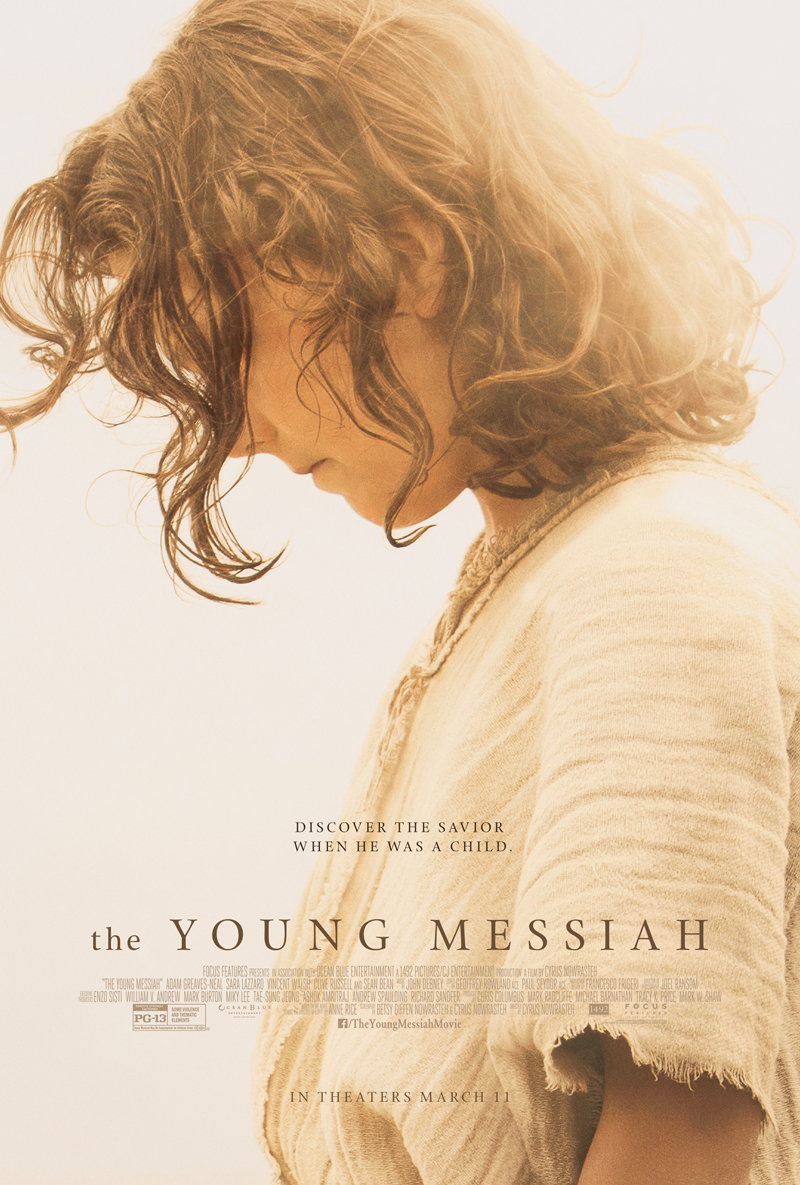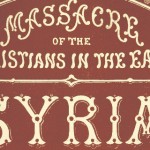 By Sr. Anne Flanagan
By Sr. Anne FlanaganThe Young Messiah, which opens this Friday, is based on Anne Rice’s carefully-researched novel Christ the Lord: Out of Egypt.
Twitter conversations between our own Sister Helena Burns and director Cyrus Nowrasteh indicate that the director did his own due diligence when it came to research. Many snippets of dialogue reflect non-biblical traditions, especially the Proto-Evangelium of James, an early Christian “novel” that attempted to do for 2nd century Christians what director Nowrasteh wanted to do for us: envision the events surrounding Jesus’ childhood during that period which the Gospel writers completely skip over, between the Presentation in the Temple when he was 40 days old to that Passover when he was twelve. The film, like the novel, settles on a seven-year-old Christ Child.
This is a surprisingly dark film, and it is Satan who provokes that darkness, starting from the opening scene in Alexandria, Egypt. The cloaked, somewhat androgynous figure of Satan (visible only to the Child) resembles the demonic figure in the Passion of the Christ, (but in one scene I thought I also caught an homage to the twisted Joker in The Dark Knight: “Your cause is lost…. Chaos rules!”). We even get a preview of the future temptation in the desert when Satan appears (in a bejeweled stole) at the Child’s bedside and then transports him to a high cliff to see the city of Jerusalem in flames, tempting the boy to react. It is this “Lenten” quality that makes The Young Messiah a not-incongruous film for the latter weeks of Lent.
The film does a nice job weaving together the strands of pious tradition and the loose ends given us in the Gospels. James, “the brother of the Lord” (Gal 1:19)? He’s Uncle Cleophas’ son. Who’s Cleophas in the movie? Mary’s brother. (People familiar with the Bible will realize that later, beneath the Cross, along with Jesus’ mother, there will be “his mother’s sister, Mary the wife of Cleophas [Clopas]” –see John 19:25.) The jolly Cleophas knows about Jesus’ miraculous conception and drops tantalizing hints to the boy, who is beginning to puzzle about his own mysterious nature and why he, and not others, can restore life to a dead bird—and to a dead boy. “Your mother was weaving the veil for the Holy of Holies,” Cleophas remarks, setting the scene of the Annunciation as told not by Luke, but by that early Proto-Evangelium. For her part, Mary insists throughout most of the film that the boy is still too young for that story.
Much is made of the fact that the Child had been born in Bethlehem (something Mary tries to keep Jesus from talking about). Even on the extended family’s return to Israel (by sea), when it comes out that Jesus had been born in Bethlehem, strangers take note. There are no seven-year-old boys in Bethlehem. Herod saw to that. When Herod’s son (who looks like the Satan figure, but without the bleached hair) hears rumors about a boy who escaped the Bethlehem slaughter, he sends a Roman centurion on a mission to finish what he himself had done those years earlier. The several encounters (and near misses) between the boy and the soldier keep the plot moving through to a pivotal moment in the Temple.
Casting was totally on target. Joseph (Vincent Walsh) is spectacular, and Severus (Sean Bean) does a marvelous job showing the centurion’s long-suppressed humanity struggle for the upper hand. The physical settings in Matera, Italy and in Rome’s Cinecittá studios are superb. The location titles in Papyrus font, not so much.
 Sister Anne Flanagan, a Daughter of St Paul, a native of New Orleans, is author of Five Keys to Understanding Pope Francis. She has also recorded over two dozen albums as a soprano in the Daughters of St Paul choir. Follow her on Twitter @nunblogger. She blogs at Nun Blog.
Sister Anne Flanagan, a Daughter of St Paul, a native of New Orleans, is author of Five Keys to Understanding Pope Francis. She has also recorded over two dozen albums as a soprano in the Daughters of St Paul choir. Follow her on Twitter @nunblogger. She blogs at Nun Blog.











